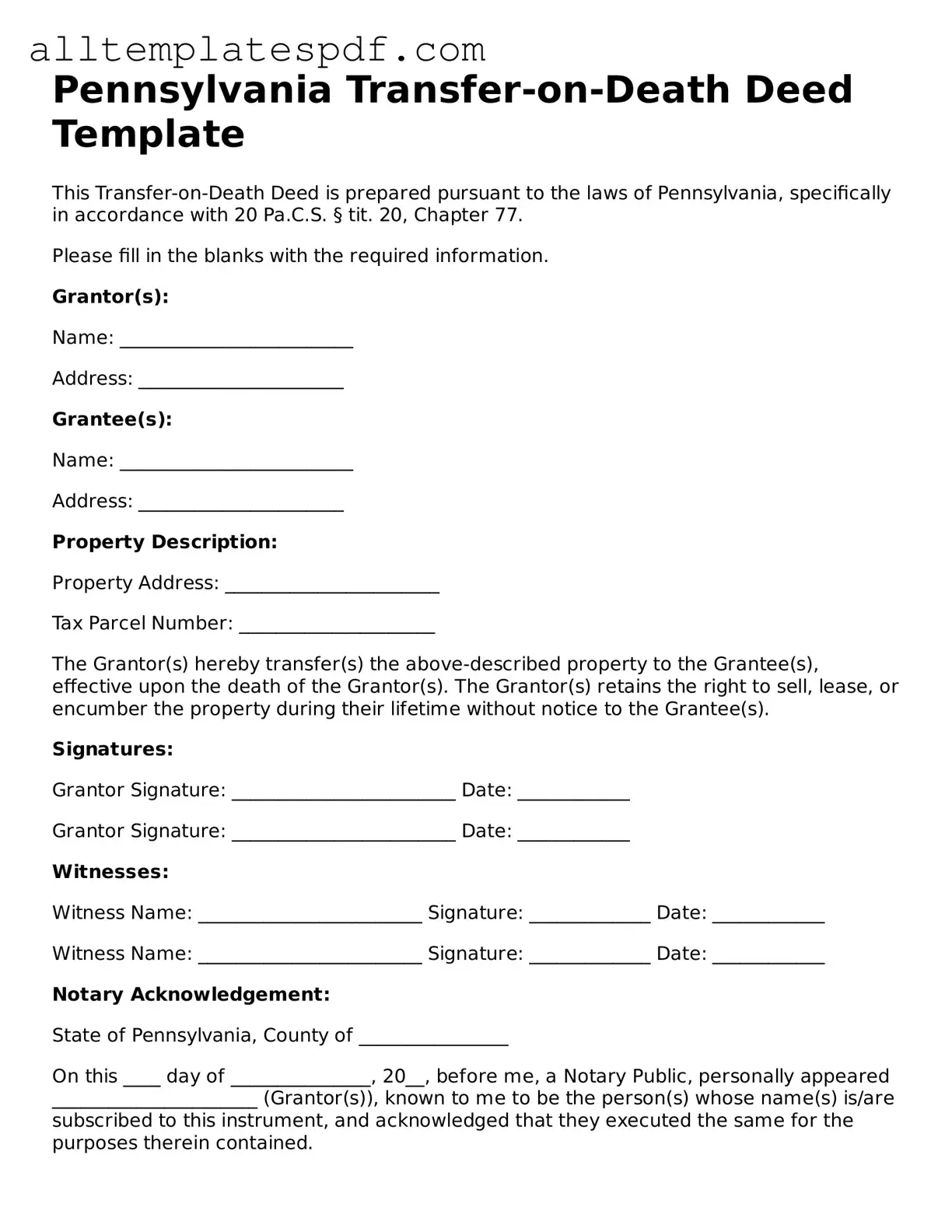Filling out a Pennsylvania Transfer-on-Death Deed form can be straightforward, but many people make common mistakes that can lead to issues down the line. One of the most frequent errors is failing to include the correct property description. It’s essential to provide a clear and accurate description of the property being transferred. Omitting details or using vague terms can create confusion and may even invalidate the deed.
Another mistake involves not signing the deed in front of a notary. In Pennsylvania, the law requires that the deed be notarized to be valid. Some individuals forget this crucial step, thinking that their signature alone suffices. Without a notary's acknowledgment, the deed may not hold up in court.
People often overlook the importance of naming the correct beneficiaries. When filling out the form, ensure that the names are spelled correctly and that all intended beneficiaries are listed. Errors in names can lead to disputes or complications when the time comes to transfer the property.
Additionally, failing to record the deed with the county is a common oversight. After completing the form, it must be filed with the local county recorder of deeds. If this step is skipped, the transfer may not be recognized, leaving the property in limbo.
Some individuals also neglect to consider the tax implications of the transfer. While the Transfer-on-Death Deed allows for a smooth transfer of property, it’s wise to consult a tax professional. Understanding potential tax consequences can help avoid unexpected financial burdens later.
Another frequent mistake is not keeping a copy of the completed deed. After filing, it’s important to retain a copy for personal records. This can be invaluable for your beneficiaries in the future, ensuring they have access to the necessary documentation.
Finally, people sometimes fail to update the deed after significant life changes, such as marriage or divorce. Changes in personal circumstances can affect who should inherit the property. Regularly reviewing and updating the deed ensures that it reflects your current wishes and avoids potential disputes among heirs.
